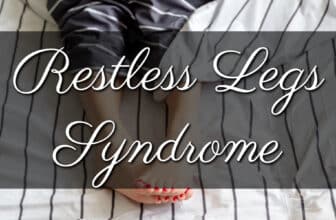Cuddling with our furry pals is something we all enjoy, but is it okay to bed down together? Sleeping together has many benefits that you may need to be made aware of and potential risks. Before deciding whether or not to share a bed with your four-legged companion, consider the pros and cons carefully.
This article will explore the safety concerns associated with sharing a bed, tips for doing so safely, and alternatives if needed. Ultimately only you can decide what’s best for yourself and your pet; however, getting professional help from an animal behaviorist might be necessary sometimes.
So let’s dive into the question: Is it safe to sleep with your pet?
Benefits of Sleeping with Your Pet
Sharing your bedroom with a pet can benefit you and your animal companion. Studies have revealed that sleeping with a pet in the room can enhance restful slumber, lower stress levels, and generate calming sensations.
For some, having their furry friend close by in bed can be a source of solace and safety. Whether snuggling up to them during a movie night or curling up next to them when it’s time for bed, there is something special about human-dog interaction that eases insomnia. Dogs naturally emit warmth which helps keep us warm throughout the night, and their steady breathing can act as white noise to lull us into dreamland.
A Mayo Clinic inquiry uncovered that those who shared their sleeping space with a pet got better sleep than non-pet owners, even if the furry friend caused some disturbances in the night. Dogs are known to increase oxytocin levels, leading to improved moods. Cats have been linked with decreasing cortisol (the hormone associated with stress). This means cats and dogs may help create a healthier environment for you while you rest peacefully at night.
Having your pet close by also offers physical benefits such as decreased movement due to less tossing and turning throughout the night – this is because our bodies become accustomed to our four-legged friends’ presence over time, so we don’t feel the need to move around as much anymore. Plus, if you ever wake up feeling scared or anxious in the middle of the night, having your loyal companion nearby will offer reassurance like no other living being could give you.
Having a pet in bed can offer comfort, warmth, and companionship. Still, it’s essential to be aware of the potential risks involved. However, caution should be taken when sleeping with your pet due to the potential dangers.
Key Takeaway: Sharing your bed with a furry companion can improve sleep quality. Research has shown that having a furry friend in the bedroom helps reduce stress levels, provide warmth, emit white noise, and offer physical benefits like decreased tossing and turning – not to mention offering some much-needed reassurance during times of fear or anxiety.
Risks of Sleeping with Your Pet
Sleeping with your pet can be a great way to enjoy the calming effects of human-dog interaction and even ease insomnia. However, it’s essential to consider the potential risks associated with sleeping close to your furry friend. Before deciding to share a bed with your canine companion, weighing the potential risks of allergies, hygiene concerns, and lack of space for comfortable sleep is essential.
For allergy or asthma sufferers, co-sleeping with a pet may not be advisable due to the potential for their fur to cause an allergic reaction or aggravate existing symptoms. If this affects you or someone in your household, opting for another type of sleeping arrangement, such as having them sleep on their own bed nearby, may be more suitable.
When considering whether to share a bed with your pet, hygiene should be considered, as it may lead to skin irritation if bacteria and dirt are not appropriately managed. Dogs bring dirt and other bacteria into the bedroom, which could cause skin irritation if left unchecked for too long. Regularly washing sheets and blankets will help keep germs away but keeping pets off furniture whenever possible is still recommended if hygiene is an issue for you.
Finally, dogs need plenty of room to move around while they’re asleep, so making sure there’s enough space in the bed for both yourself and your pet is key if you want everyone involved to get some restful shut-eye each night without interruption. Investing in larger beds or mattresses explicitly designed for couples who share their beds with pets can help ensure everyone has enough room throughout the night without sacrificing comfort – a win-win situation.
Key Takeaway: Co-sleeping with a pet can provide companionship and aid in sleep; however, it’s important to consider potential hazards such as allergies, hygiene concerns, and space constraints. Investing in larger beds or mattresses designed specifically for couples who share their beds with pets is an ideal solution ensuring everyone gets some restful shut-eye without sacrificing comfort.
Tips for Safely Sleeping With Your Pet
Establishing limits between you and your furry companion is necessary for a restful night’s sleep. Here are some tips for sleeping safely with your pet:
- Ensure the bed or sleeping area is spacious enough to let you both move around freely without interfering with each other’s rest.
- Provide an elevated platform or cushion, so they have their designated spot to rest on during the night. This will help create a sense of ownership over their space while still being close enough to feel connected to you.
- Letting your pet know what behaviors are acceptable before bed can help ensure everyone gets a good night’s rest. Teach them commands such as “off” or “stay” when they try to climb onto the bed or get too close during the night, so they understand not all behavior is allowed in this space.
- If they start getting restless at night, give them toys or treats that encourage them to stay in one place instead of wandering around the bedroom, which could disrupt your sleep cycle.
- Be mindful of any health conditions that could compromise the safety of both parties while sleeping together; allergies, asthma, and arthritis should all be considered before attempting to snuggle up with your pet.
- Keep an eye out for signs such as panting or drooling excessively, which may indicate discomfort due to heat from being under blankets/sheets at higher temperatures than what is recommended by veterinarians (typically below 70°F).
Key Takeaway: Sharing a slumber with your pet can be comforting, but establishing limits and constructing a secure environment is essential. Provide ample space for co-sleeping, educate the pet about commands such as “off” and “stay,” and watch out for heat exhaustion symptoms.
Alternatives to Sleeping With Your Pet
Sleeping with your four-legged companion can be a fantastic way to acquire enhanced rest and savor the camaraderie of your pet. Sleeping with your animal companion in the same bed may not be sensible or secure. If you’re looking for an alternative to sharing a bed with your pet, there are plenty of ways to reap the benefits without putting yourself at risk.
- Cuddling releases oxytocin, which helps relax both you and your pup, making it easier for both of you to fall asleep faster. Plus, cuddling also provides comfort and security that can help reduce stress levels—which in turn helps improve sleep quality overall. Even a short cuddle session of 10 minutes before bed can have profound effects on both your and your pup’s ability to drift off more quickly, as well as providing the comforting assurance that lowers stress levels for improved sleep quality.
- Exercising with your pup before bed can be a great way to de-stress and tire out Fido, so he won’t disturb you at night if he’s in the bedroom. Games such as fetch or tug-of-war can provide a distraction from any worries while releasing endorphins that promote relaxation, allowing for more restful sleep later on.
- For those with limited space or allergies, investing in comfortable furniture specifically designed for cats and dogs may be a viable option. From elevated dog beds with built-in storage compartments to luxurious loungers made especially for pampered pooches, plenty of options can provide the same level of comfort and relaxation without having to share a bed.
Key Takeaway: Snuggling with your pet before bed can be a great way to relax and bond, but sharing a bed may only sometimes be the safest or most practical solution. Instead of sharing a bed, try cuddling before bedtime for stress-reducing oxytocin release and physical activities like fetch to tire out Fido. Investing in furniture designed specifically for cats and dogs is also an option if you have limited space or allergies.
When to Seek Professional Help
When it comes to bed-sharing with your furry companion, there may be occasions when seeking professional assistance is prudent. If your pet’s presence in the bedroom disrupts your sleep, it may indicate a deeper sleeping disorder and thus necessitate medical intervention. Here are some signs that indicate it may be time to seek medical advice:
Difficulty falling asleep or staying asleep
If you cannot fall asleep or stay asleep because of your pet’s movements or noises, it might be time for a doctor’s visit. It could be a sign of something else, such as sleeplessness or RLS.
Excessive snoring from either party
Snoring from either you or your pet can disrupt your sleep and should not be ignored if it persists for more than two weeks at a time, as it could point towards something serious like OSA or other respiratory problems that require treatment from a doctor.
If you or your pet exhibit disruptive behavior while trying to sleep, such as excessive barking or scratching, this should not be taken lightly and warrants further investigation. A physician specializing in treating these issues should be consulted to properly diagnose and treat the problem before any permanent damage occurs due to a lack of restful slumber each night. Keywords: Sleep, Pet, Disruptive Behavior, Physician Treatment
If you feel anxious about having your pet close by while trying to relax and get some shut-eye, consulting with someone specializing in treating anxiety disorders could benefit both parties. Gaining techniques for managing tension can assist in decreasing stress levels with time, thereby enhancing general well-being for both people and their beloved animals.
Key Takeaway: Sleeping with your pet can be a double-edged sword; it may provide comfort and security; however, if either party is exhibiting disruptive behavior or has difficulty sleeping due to the presence of the other, seeking medical advice should not be taken lightly. It’s best to consult an expert in anxiety disorders so both parties can learn coping strategies to help reduce stress levels over time.
Frequently Asked Questions
Is it unhealthy for dogs to sleep in the bed?
It is not necessarily unhealthy for dogs to sleep in bed, but it can be a source of health risks. If the dog has fleas or other parasites, they may transfer these onto your sheets and mattress. Additionally, if you have allergies, pet dander from the dog could aggravate them while sleeping. Finally, sharing a bed with an animal that isn’t house-trained could lead to accidents during the night, requiring extra cleaning and maintenance. Weighing potential hazards is a must before permitting your pet to sleep in the bedroom or on the bed.
Should I pet my dog while sleeping?
It is not advisable to caress your canine while snoozing. Petting your pup while they slumber may be disruptive, potentially hindering your ability to doze off or remain asleep. Additionally, the motion of your hand could wake up the dog, which would also disturb your sleep. To get better restful sleep, focus on creating a comfortable environment that encourages relaxation and calming activities before bedtime, such as reading or listening to music.
Do dogs like sleeping with humans?
Canines may enjoy slumbering with their humans, offering them safety and camaraderie. Studies have shown that dogs often sleep closer to their owners than other pets or animals in the home. Dogs also mimic their owner’s sleeping patterns, suggesting they find comfort in being close by while they rest. However, not all dogs will appreciate snuggling up in bed; some may prefer having their own space for sleeping. Ultimately, it depends on the canine’s individual inclinations and temperament.
Conclusion
Snoozing with your animal companion can be a great way to experience solace and assurance. However, weighing the risks of sleeping with your pet against its benefits is important. Take precautions to ensure a safe and secure sleeping arrangement for you and your pet. If you have any safety concerns or symptoms that persist, seek professional help from a veterinarian or sleep specialist for further guidance on safely managing this situation. When considering whether it is safe to sleep with your pet – make an informed decision based on what works best for you and those around you.






